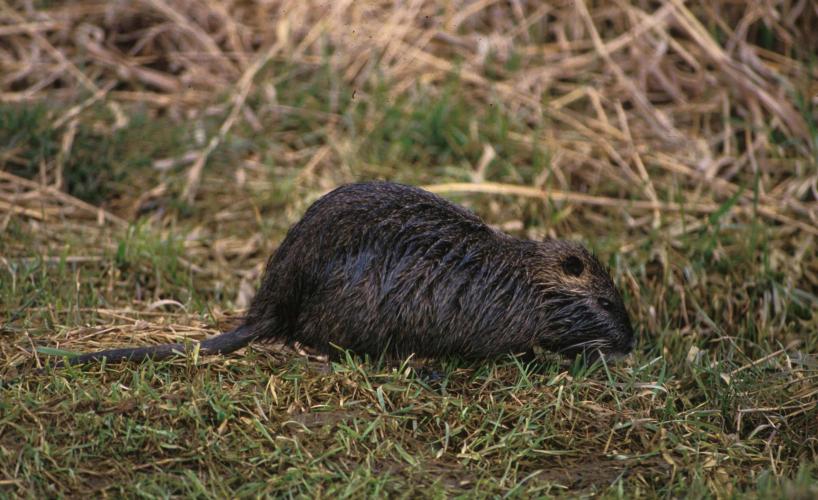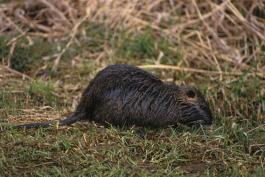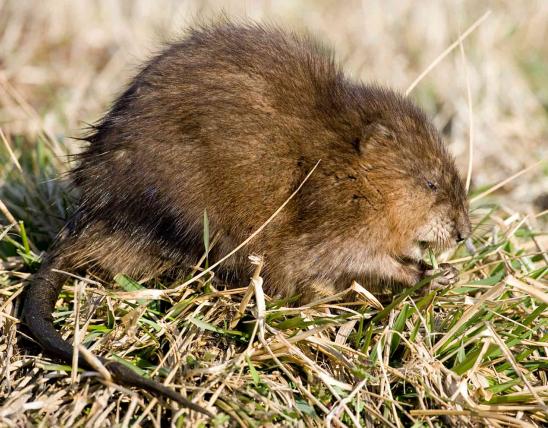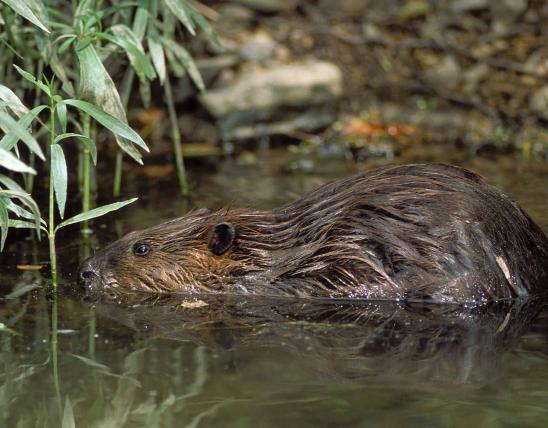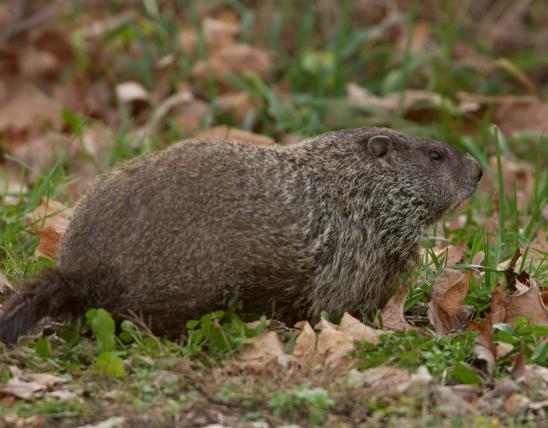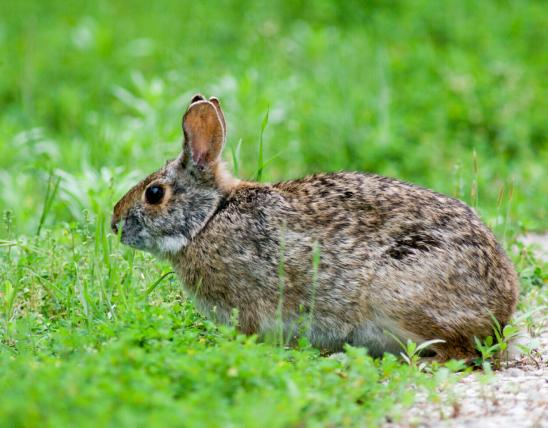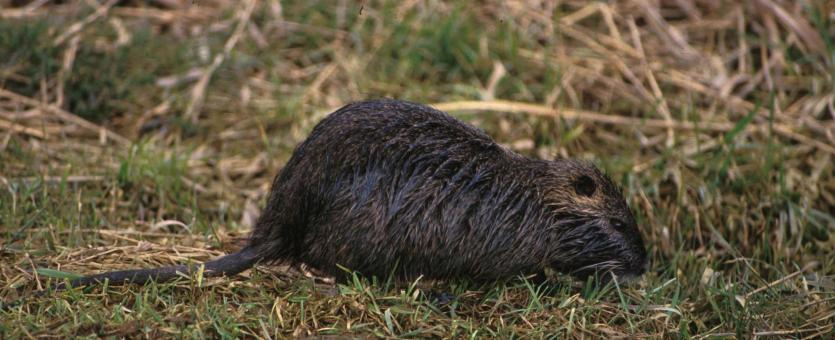
The nutria is a robust, semiaquatic rodent with a large head, small ears, small front legs having feet with unwebbed toes, large hind legs having feet with webbing between the first 4 toes, and a round tail. The tail is 12–18 inches in length and is scaly and scantily haired. The tail of nutrias trails smoothly behind them when swimming, since the tail is not used to propel them in the water (they swim primarily with their feet). The general body color is brownish. The large front teeth are frequently visible and are yellow to orange. The whiskers are also easily seen from a distance; they are 3–5 inches long and white.
Similar species: The nutria somewhat resembles a large muskrat or a small beaver but can be distinguished by the round tail that trails smoothly behind as they swim (the muskrat's tail is slightly vertically flattened and moves like a snake while swimming; the beaver's tail is horizontally flattened). The tail shape can be difficult to see when the animal is swimming, but the tail's motions are more easily visible. Also, beavers and muskrats have subtle black whiskers that are not easily seen from a distance, while nutria have more visible white whiskers.
Total length: 30–42 inches (tip of nose to end of tail); weight: 15–25 pounds.
In Missouri, the nutria has been occasionally observed or trapped in scattered counties across the state. Recent observations are primarily from the southeastern part of the state: Stoddard, Pemiscot, Jasper, Cape Girardeau, and Bollinger counties.
Habitat and Conservation
Wetlands and marshes. Nutria cannot tolerate particularly cold winters, so they will probably not establish large populations in Missouri. This species was first reported in Missouri in 1943. They have been introduced globally for fur and for meat, but neither enterprise seems commercially viable. Where nutria establish large populations, they usually become pests, destroying wetlands, wrecking irrigation systems, gnawing on human property, and displacing native species.
Food
These herbivores feed heavily on aquatic plants, and because of their voracious appetites they can quickly overgraze an area. They also eat the roots of aquatic vegetation, which can cause erosion or can convert productive wetlands to open water. They are may forage on neighboring crops. They consume about 25 percent of their body weight each day.
Status
Few confirmed records currently exist for Missouri. First reported in Missouri in 1943.
Native to South America, nutria were brought to the United States and other countries for the fur market. They have been raised in captivity and have been released or escaped into the wild. Where they have no predators, nutria can overgraze wetlands, exposing their fragile organic soils. In the United States, they are most numerous, and problematic, in the marshes of Louisiana, Maryland, and Oregon.
Life Cycle
Nutria can have up to 3 litters a year. Gestation lasts 130 days. A litter comprises 1–13 young. Upon birth, the young have fur, have open eyes, and are able to start eating vegetation within a few hours (thus they are precocial; the same term is used for the young of chickens, which hatch already feathered and are able to run around as soon as their feathers dry). The young nurse for 7–8 weeks, after which they leave home. They can breed as early as 3 or 4 months of age. They can potentially live for up to 6 years, but in the wild most only live for about 1 year, with 3 years the usual limit.
Human Connections
Nutria are native to South America and were originally brought to the United States in 1889 for their fur. Many escaped or were released into the wild. Nutria are one of many examples of the problems caused when people introduce an exotic organism into a region where it doesn't belong. In states where large populations have become established, they destroy thousands of acres of marshland, damage irrigation systems and cropland, increase erosion problems, and displace native animals. Once nutria are established, it takes great effort and expense to control them.
Ecosystem Connections
While they are currently not well established in Missouri, nutria wreak havoc on marsh ecosystems in Louisiana and other southern states. There, they forage on emergent aquatic plants and dig into the banks for roots, denuding large patches of ground and damaging wetland habitats. They are such a problem that in many places eradication efforts are under way. Currently, cold winters prevent nutria from becoming well established in Missouri, but climate change could create suitable conditions for this species in the future, especially in the southeastern portion of the state.
